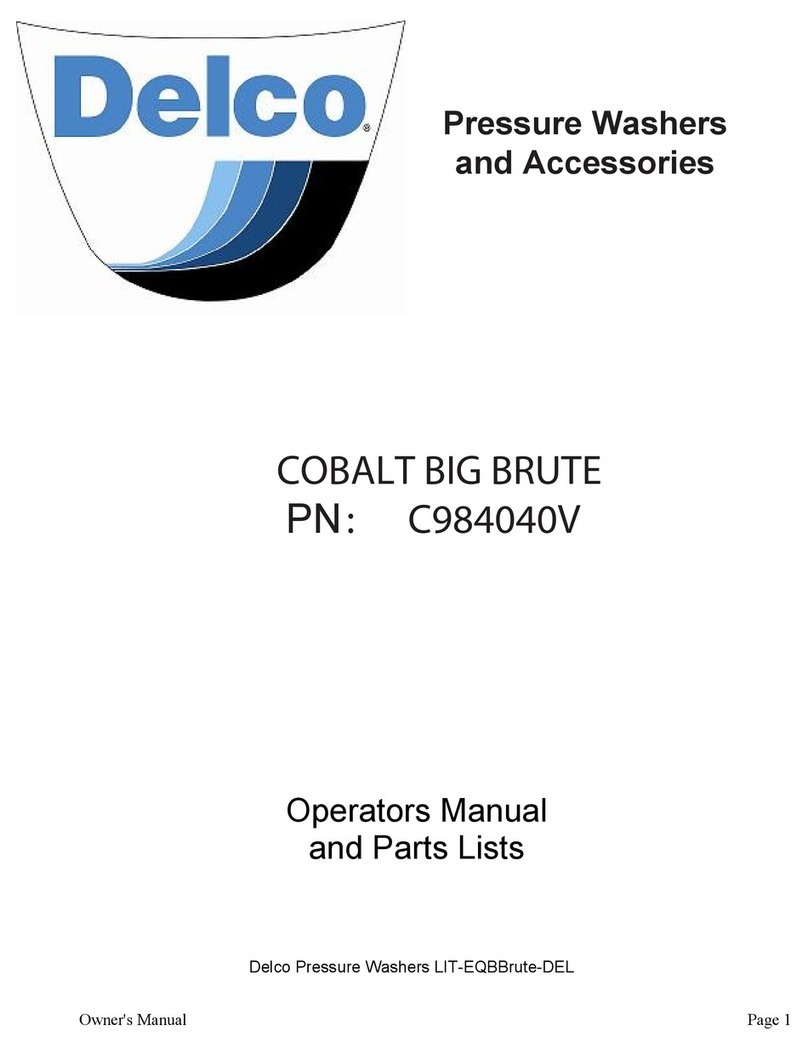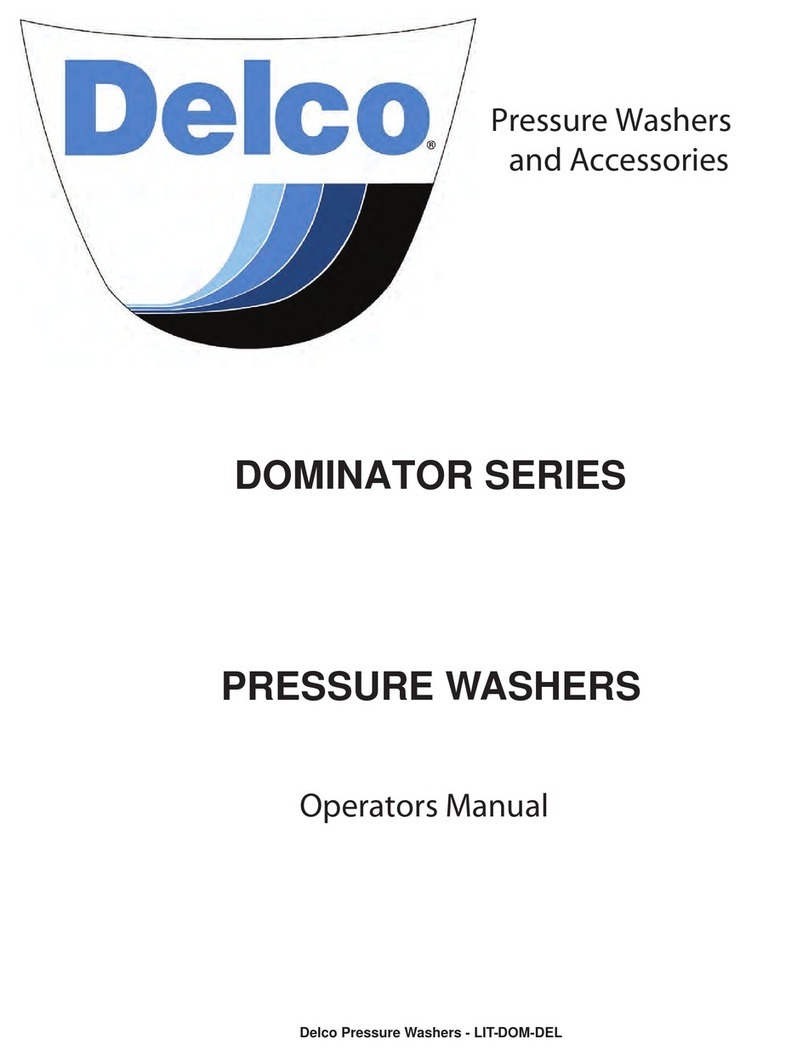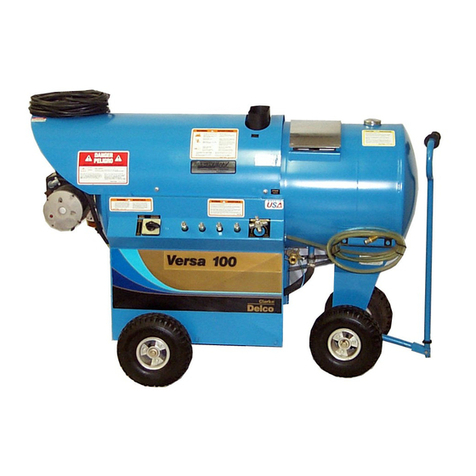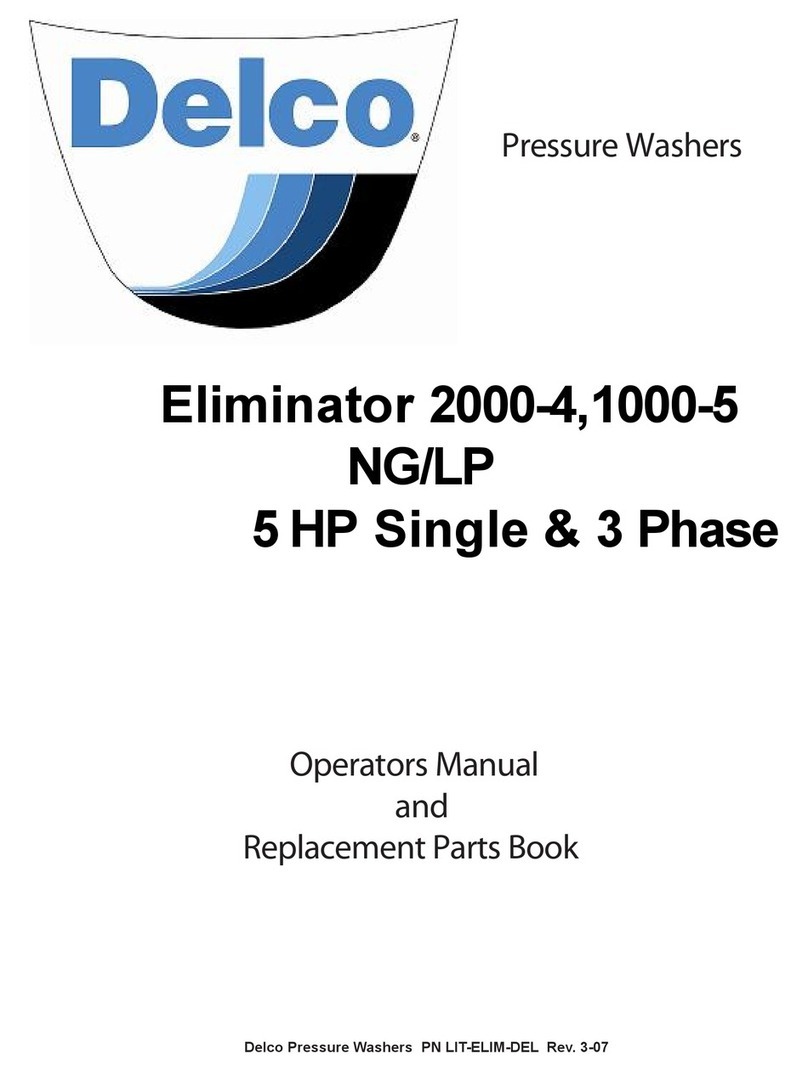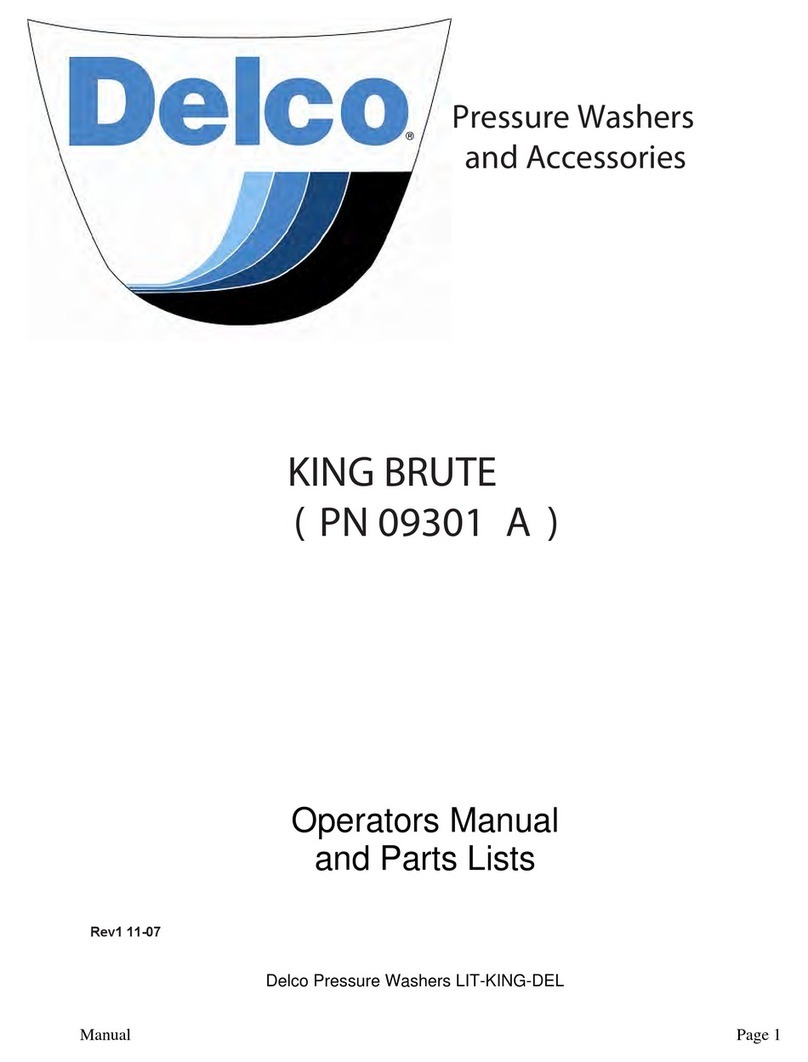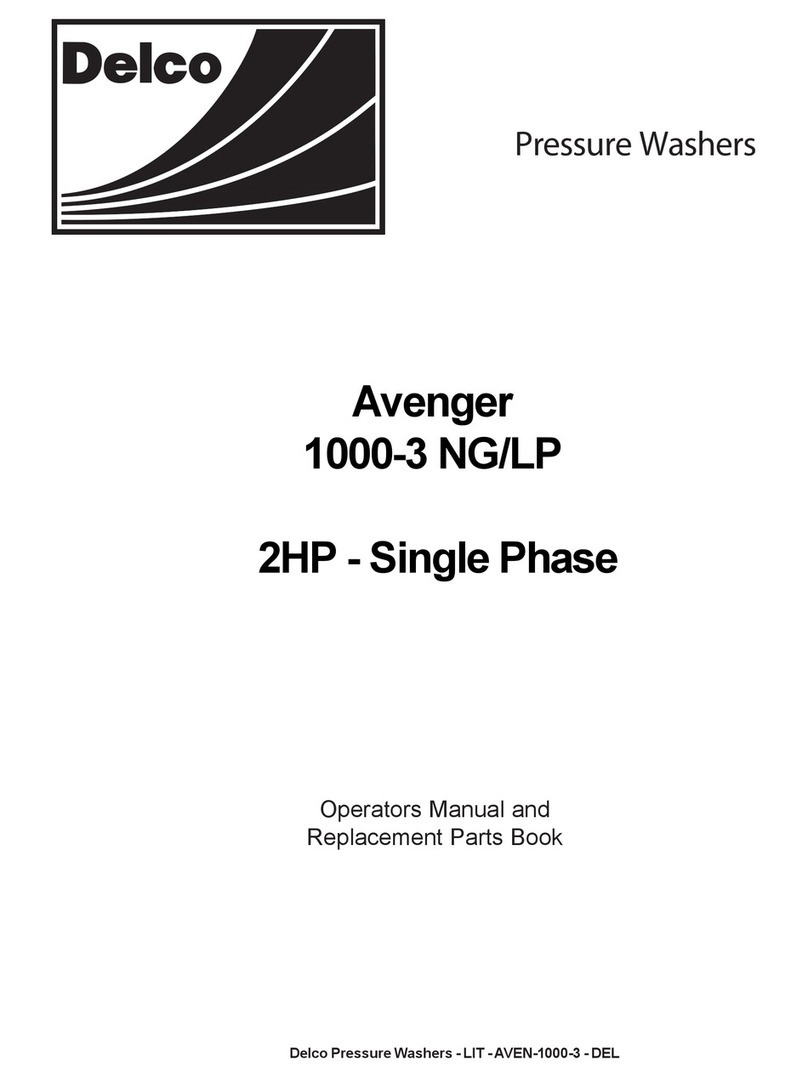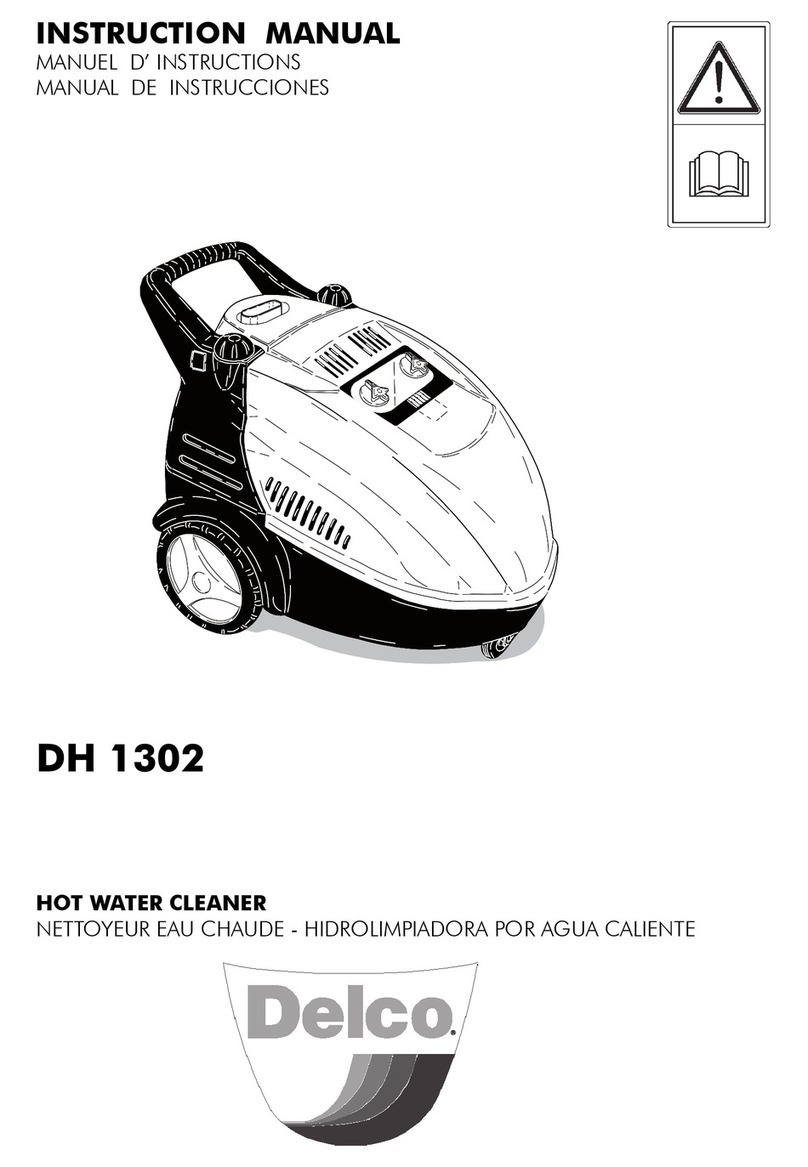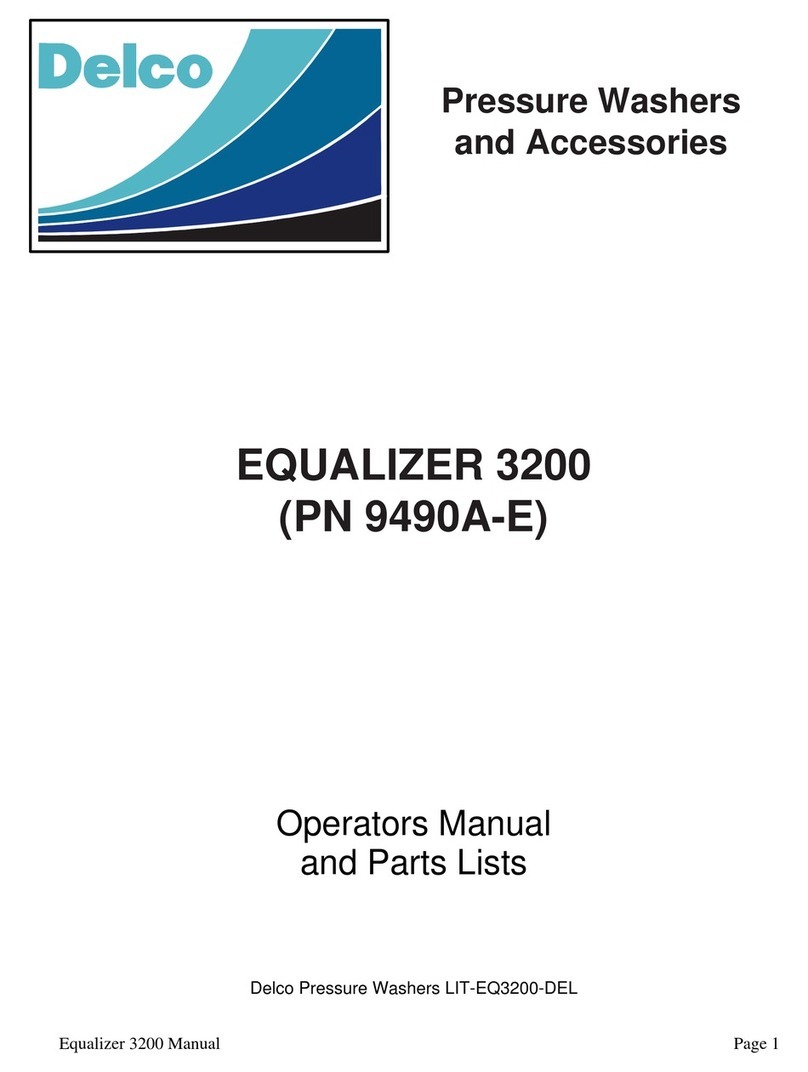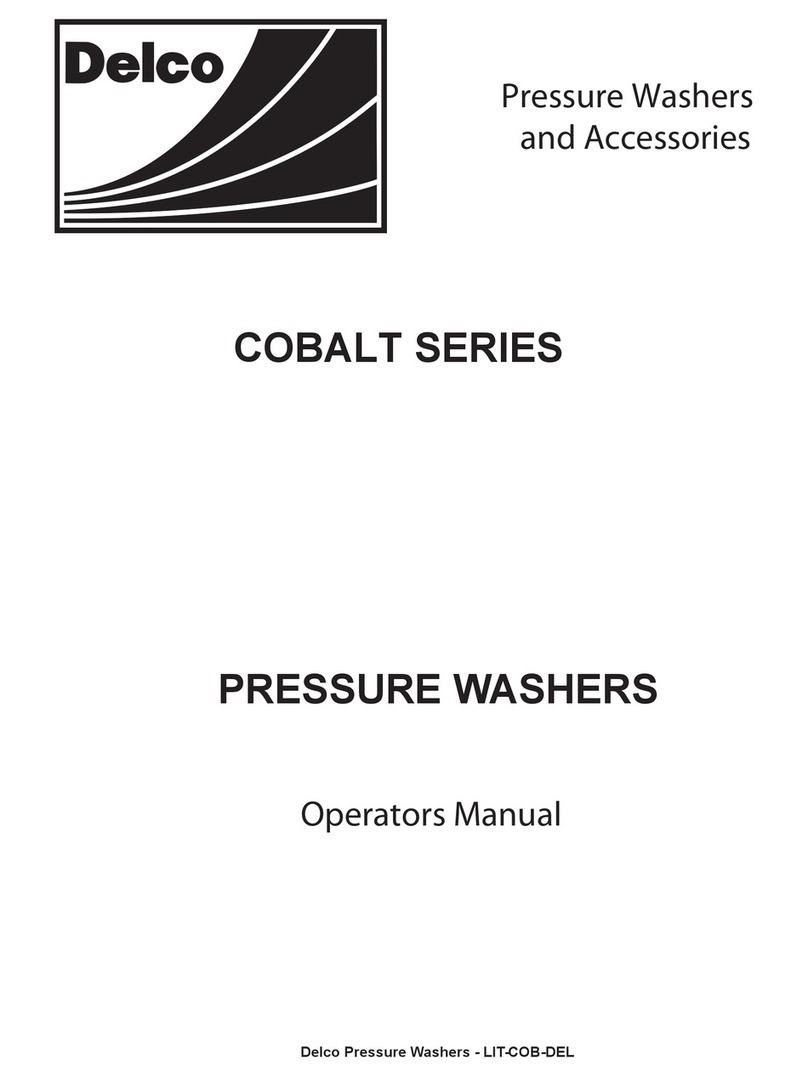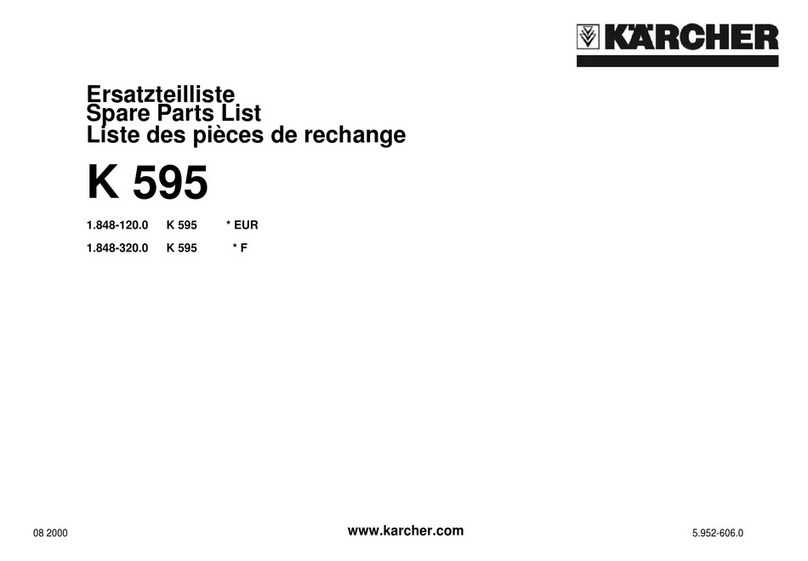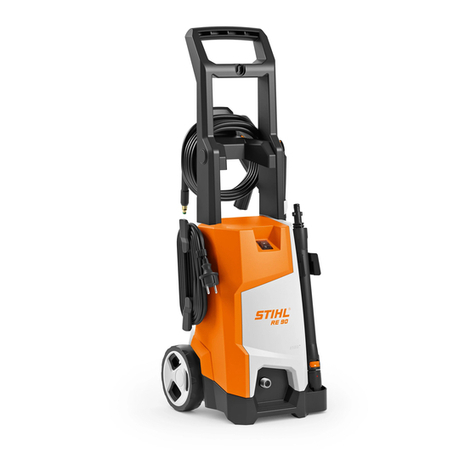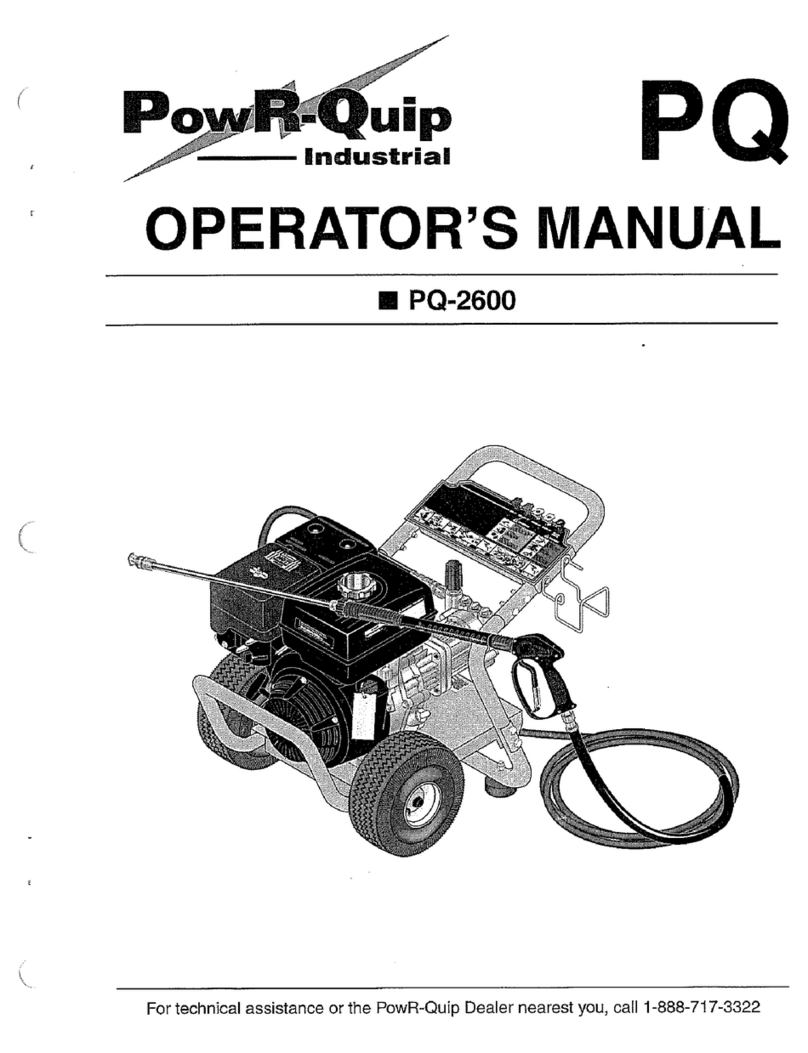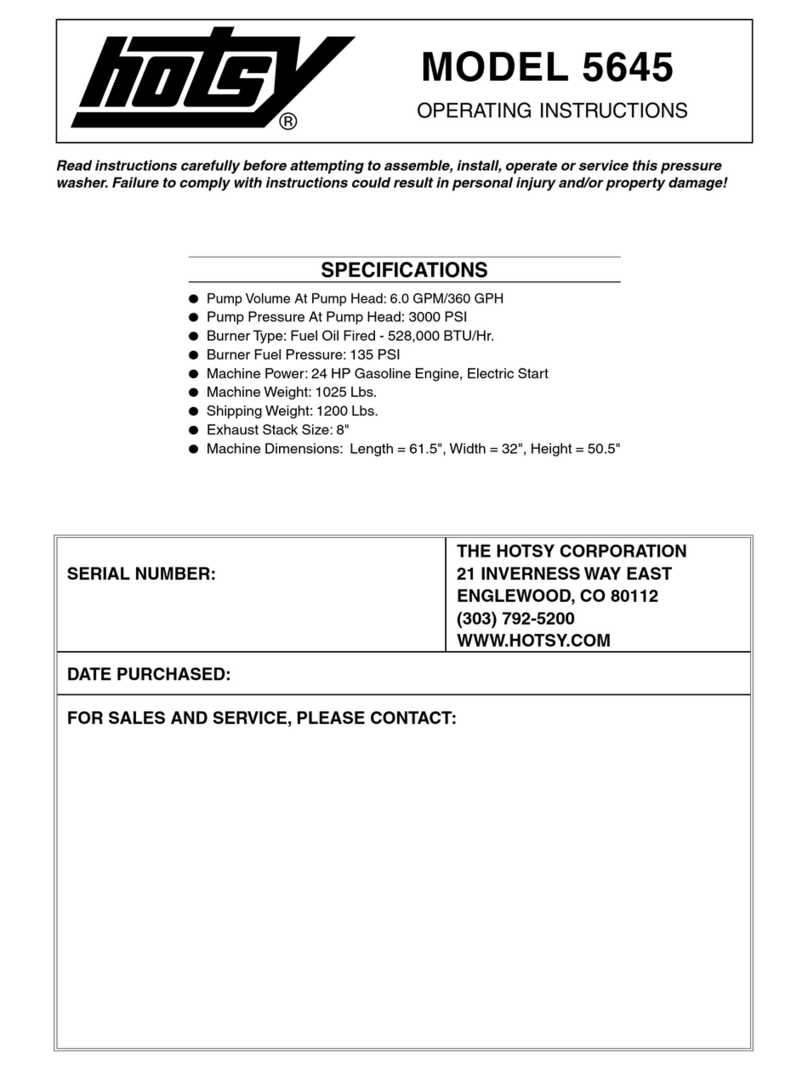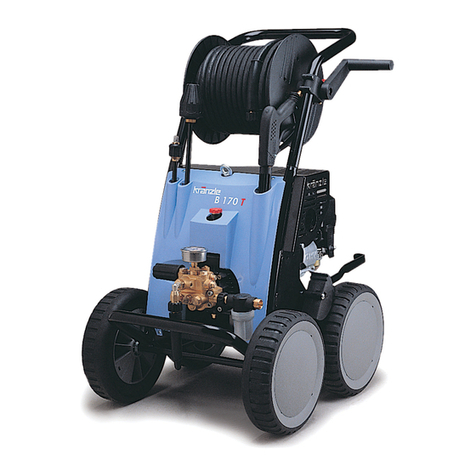English
- 8 -
The use of the H.P. cleaner must be considered according
to the place where the washing is performed (for example: food
plants, pharmaceutical plants, etc.)
Pertinent rules and safety conditions must be followed.
As for the protection against electric shock, the H.P.cleaner
belongs to CLASS I.
Do not direct water spray at your own or other people’s
body in order to clean clothes or shoes.
While working it is forbidden to stop the trigger (lever) of
the lance in ON position.
In the hot water H.P. cleaners a Diesel fuel burner is used
for water heating. The use of other fuels is dangerous.
Before starting any cleaning or maintenance operation,
disconnect the machine from the electric and water supply
networks.
Periodically, at least once a year, have the safety devices
checked by one of our authorized dealers.
If the appliance is to be used in an enclosed space, install
a ue gas extraction system and guarantee adequate ventila-
tion.
The hot water cleaner must be monitored while it is
working.
Do not clog the openings or the ventilation grilles and the
heat and smoke extraction systems in the hot water cleaners.
Do not use the machine if the supply cable is damaged.
For the replacement of the damaged cable apply exclusively
to one of our authorized dealers.
The supply cable of this appliance must not be replaced by
the user.
The electric power cable must never be under mechanical
tension and must be protected against accidental crushing.
In case of damage or malfunction, switch off the applian-
ce (disconnecting it from the water main and from the electricity
main via the ON/OFF switch or by unplugging the plug in the
case of water cleaners rated at less than 3 kW) without tampe-
ring with it.
Contact one of our authorized dealers.
The use of any electric appliance requires the respect of
some basic rules:
• Do not touch the appliance with wet or damp hands or feet.
• Do not use the appliance bare-footed or with unsuitable
clothing.
• Do not pull the supply cable or the appliance itself in order
to disconnect the plug from the electric supply.
(For water cleaners rated at less than 3 kW tted with plug).
The H.P. cleaner must not be used by children, teen-agers
or incapable persons (under the inuence of alcohol, etc.)
Use only original accessories that can allow safe working
of the appliance.
The exible hose connecting the lance to the H.P. cleaner
must not be damaged.
In case of damage, replace it immediately.
Hoses, connections and ttings for high pressure systems
are very important to guarantee the safety of the H.P. cleaner.
Use only original spare parts which have the manufacturer’s
approval.
Do not use the H.P. cleaner when persons or animals are
in the area being cleaned.
High pressure jets may be dangerous if not properly
used.
The jet must never be directed at persons or animals, electric
appliances or at the appliance itself.
The high pressure water jet causes a reaction power on
the lance. Hold the lance grip vigorously.
The use of the H.P. cleaner must be considered according
to the kind of washing which must be performed.
Protect yourself against the ejection of solid materials or corro-
sive substances by means of adequate protective clothing.
GENERAL WARNINGS ABOUT INSTALLATION AND USE
